#history with joanna
Text










Blade Runner 1982
#blade runner#ridley scott#1980s#philip k dick#dystopia#lit#film#sci fi#fantasy#cinematography#art history#cyberpunk#cinema#80s#movies#futurism#punk#retro#myth#jordan cronenweth#edward james olmos#sean young#joanna cassidy#m emmet walsh#harrison ford#rutger hauer#joe turkel#brion james#daryl hannah#🦄
435 notes
·
View notes
Text
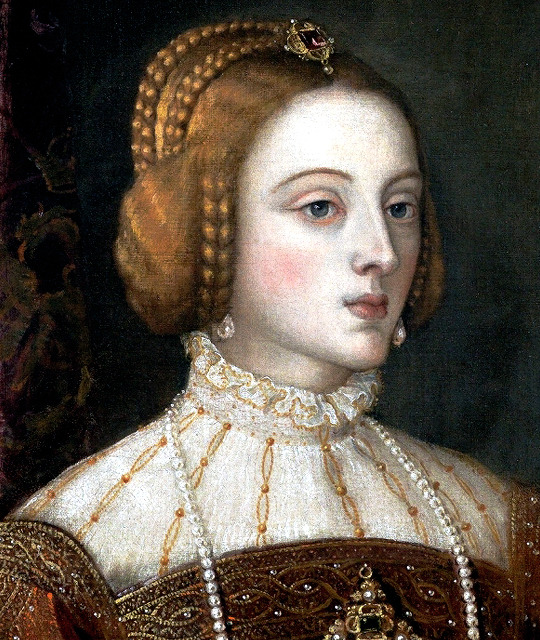

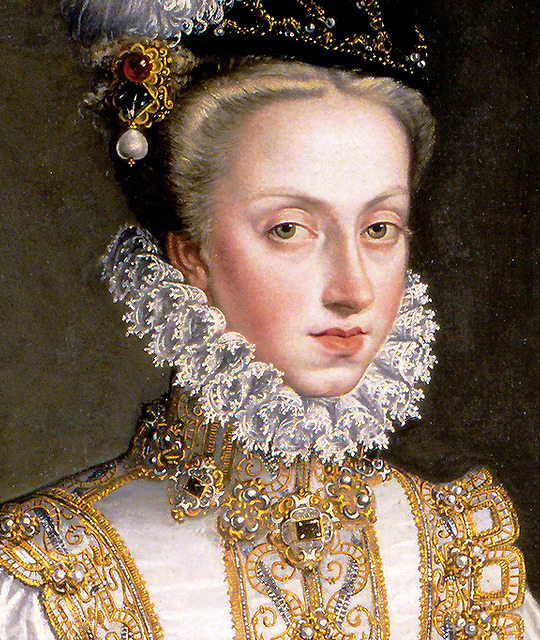
ISABELLA OF PORTUGAL by Titian, 1548
JOANNA OF AUSTRIA by Sánchez Coello, 1557
ANNA OF AUSTRIA by Bartolomé González y Serrano, 1570
#historyedit#isabella of portugal#joanna of austria#juana of austria#anna of austria#queen of portugal#queen of spain#princess of portugal#history#women in history#house of aviz#house of habsburg#titian#alonso sanchez coello#bartolome gonzalez y serrano#art#renaissance art#gramma isabella#joanna was isabella's daughter#and anna was joanna's niece#thus isabella's granddaughter#edit#x#i just love how anna looked more like her aunt than her own mom 🥹#and both joanna and anna looked like their grandma
409 notes
·
View notes
Photo

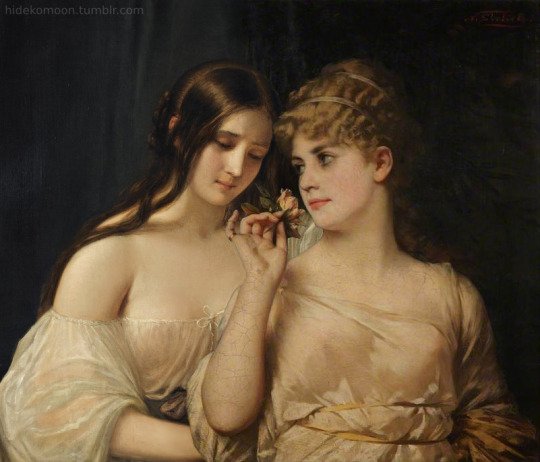


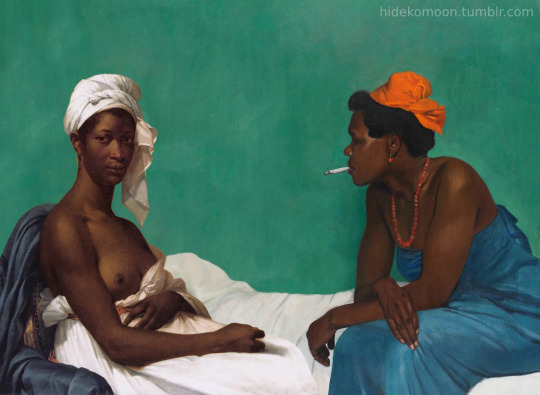
i finished the first 3 last spring and then completely gave up on this project until i completed number 4 & 5 this week. i’m kind of running out of paintings with easy poses to photoshop together but i’m gonna keep looking! (here’s my little collection of lesbian montages)
1. Evelyn de Morgan’s The Prisoner (1907-08) with Joanna Mary Boyce’s portrait of Fanny Eaton (1859)
2. Waterhouse’s The Awakening of Adonis (c.1900) and John Simmons’s Titania Sleeping in the Moonlight Protected by her Fairies
3. Portrait of a Lady by Natale Schiavoni (c.1820) with Nathaniel Sichel’s In the Time of Roses
4. A painting by Eugene de Blaas and L’Espoir by Auguste Leroux
5. La Blanche et la Noire by Félix Valloton (1913) with Portrait of Madeleine by Marie-Guillemine Benoist (1800)
#medievalcore#painting#mine#lesbian#wlw#art history#evelyn de morgan#john william waterhouse#waterhouse#fanny eaton#joanna mary boyce#pre raphaelite#academism#classical#mythology#sapphic#the first one is my favorite montage i've ever done tbh. boyce's portrait of fanny eaton is just perfect
203 notes
·
View notes
Text
was supposed to only skim through a book I need to study for an exam but it actually ended up being interesting. I don't think I'll ever graduate

#it's called fear: a cultural history by joanna bourke#last night i read the chapter about disasters and mass panic#and how if mass panic sets in it'll take 5 minutes for people to start dying. so you have to be able to evacuate in 3-4 minutes#also mass panic sets easily in places where emotions are manipulated ie. theatre and sports stadiums#after the victoria hall disaster in 1883 where children were trampled to death as they scrambled for a toy prize after a theatre show#they invented those doors with the horisontal handles that you can push and they open. the crash bar#which prevents a mass of people getting stuck#anyway. i'm here all week for history trivia#nor's rambles
112 notes
·
View notes
Text

Portrait of Begum Samru, born Farzana Zeb un-Nissa, married Christian name Joanna Nobilis Sombre (c. 1753-1836)
Unknown artist, Delhi School
watercolour on paper
Delhi, India, c. 1830
Starting her career as a dancing (nautch) girl, Begum Samru eventually converted from Islam to Christian Catholicism and became the ruler of the small territory of Sardhana in present-day Uttar Pradesh. She was the head of a professionally trained mercenary army consisting of Europeans and Indians that she inherited from her European husband, Walter Reinhardt Sombre after his passing in 1778. She built several palaces including at Chandni Chowk in Delhi. Stories have been written about her political and dipolomatic astuteness and the important battles fought by the troops under her command. This painting follows the format of a portrait miniature on ivory but is larger and on paper surrounded by a lavish decorative border. She is depicted older in age with her right hand holding the end of a hookah pipe. It may have been part of a set of portraits of Indian rulers of the 19th century.
#begum samru#Joanna Nobilis Sombre#Delhi school#art#watercolour#India#1830s#19th century#history#women
27 notes
·
View notes
Text
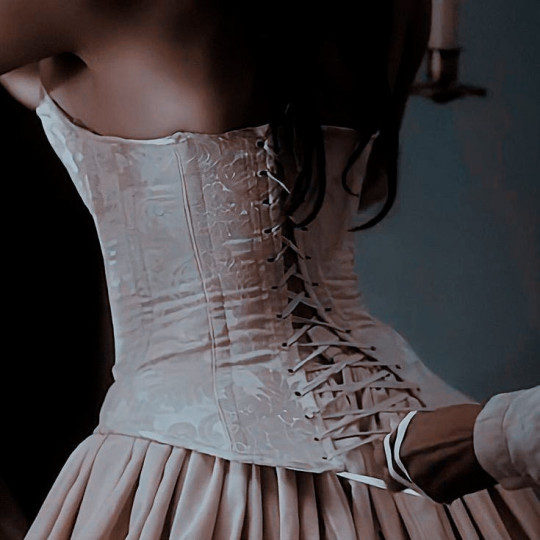




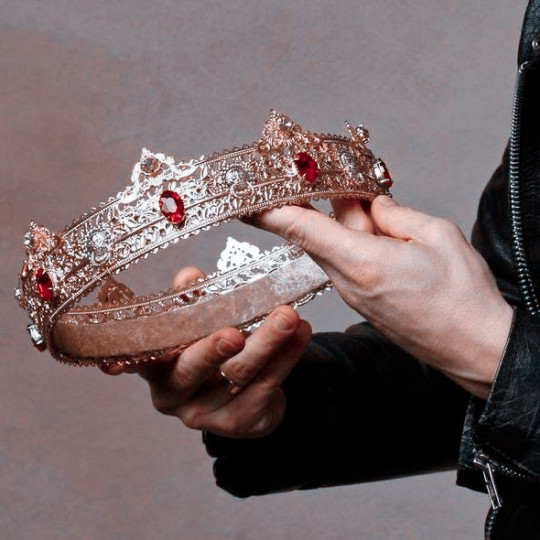



– juana i de trastámara ; infanta of spain, duchess consort of burgundy, queen of castile, aragon, valencia, mallorca, navarre, naples, sicily, sardinia and countess of barcelona was born on this day, 6th of november of 1479
#juana i de castilla#joanna of castile#juana the mad#house of trastamara#spanish history#on this day in history#weloveperiddrama#women in history#perioddramaedit#isabel tve#la corona partida#irene escolar#myedit*
60 notes
·
View notes
Text
Children of Henry II and Eleanor of Aquitaine

#history#medieval#richard the lionheart#12th century#plantagenets#geoffrey duke of brittany#joanna daughter of henry ii#henry the young king#My art
10 notes
·
View notes
Text
During [the spring and summer of 1141], a number of contemporary narrative sources agreed that Matilda’s sudden and unexpected success went straight to her head. Matilda’s most renowned modern biographer has suggested that “conduct acceptable in a powerful king . . . was not acceptable in a ‘Lady of the English’. This line of reasoning can be taken quite a bit further. It is clear that contemporaries expected Matilda to emulate the behavior of those women who had previously held the rank of regina, and act like a queen consort while performing the office of king. Most queens consort, however, did not have to consolidate recognition of their position as Matilda was constrained to do. Nearly all the chroniclers who had marveled at her assumption of power turned on her immediately. Not surprisingly, the Gesta Stephani took the greatest exception:
She at once put on an extremely arrogant demeanor instead of the modest gait and bearing proper to the gentle sex, began to walk and speak and do all things more stiffly and more haughtily than she had been wont.
But other more sympathetic chroniclers also joined this chorus of disapproval: Henry of Huntington described her as “elated with insufferable pride” while the Worcester chronicler noted her “hard heart” as she strove to consolidate her position. Had she been a man, Matilda’s decidedly authoritarian style might have passed for a regal show of strength. Indeed, Matilda probably felt that if she was to hold on to her newly acquired status, she needed to behave like a king. Thus, Matilda’s forward movement from recognition of her status to the execution of her office was fraught with gendered difficulties concerning how a woman ought to conduct herself.
...As she anticipated her crowning, Matilda strove to consolidate her dynastic claims and establish her authority. It seems reasonable to suppose that Matilda looked to her father and her first husband for examples of successful kingship as she did for representational purposes. Both Emperor Henry V and King Henry I were suspicious, uncompromising, relentless, and ruthless in the pursuit of their aims. Probably both would have advised Matilda to follow their example. This was exactly what St. Bernard told Queen Melisende of Jerusalem following the death of her husband: “show the man in the woman; order all things . . . so that those who see you will judge your works to be those of a king rather than a queen.” Much of Matilda’s behavior during the spring and summer of 1141 can be explained as the emulation of male gendered kingship. But kings had the built-in advantage of female consorts to soften the more hardboiled aspects of their rule; Matilda had played that very role herself for her first husband. Nevertheless, in 1141, Matilda eschewed the feminine aspects of queenship completely, in effect negating what could have been useful symbolism to bolster the construction of her authority. But for Matilda to be perceived as a soft, forgiving, and gentle woman at the one moment she needed to consolidate her position at the top of a male dominant political society would not have been practical.
But by constructing herself as a female feudal lord, and emulating male gendered kingship, Matilda annoyed contemporary observers. The chroniclers’ hostility may have been due to the fact that Matilda was claiming kingly sovereignty for herself alone, and not in association with either her husband or her eldest son. The Gesta Stephani described Matilda as not only arrogant, but also spurning the advice of her chief advisors, the earl of Gloucester, her uncle King David of Scotland, and the “kingmaker” himself, the Bishop of Winchester. The Gesta implied that if Matilda had behaved as a deferential woman, and heeded the counsel of her male advisors, she could have devised a means to permanently depose Stephen, and be crowned and anointed in his place. The Gesta placed Matilda’s ultimate failure at her own door, blaming it on her arrogant reliance on her inferior, womanly intellect and emotions.
Matilda’s hard-line stance, acceptable in a male king, bothered the authors of the Worcester chronicle and the Gesta, suggesting that contemporaries were confused by what they wanted the “Lady of the English” to do, indicating that, as a woman and a domina, she should behave gently like a queen rather than forcefully like a king. Combined, all the chroniclers, with the exception of Malmesbury, suggested that Matilda should have used the intercessory powers of queenship to set Stephen free, moderated the harsher aspects of her father’s rule, and excused the Londoners from financial support. Although a more diplomatic approach might have helped, freeing Stephen at that moment in time would have realistically served no practical purpose in establishing Matilda’s authority. And, in denying Eustace his inheritance, Matilda was only imitating the efforts of her father, Henry I, who also dealt harshly with challengers to his throne. Henry I kept his elder brother Robert Curthose in prison until he died, and prevented his nephew, William Clito, Curthose’s heir, from gaining any aspect of the Anglo-Norman inheritance. Matilda wished to convince her contemporaries that she was quite capable of being a king, but their reactions betrayed hostility toward her as a woman presuming to establish kingly authority.
-Charles Beem, "Empress Matilda and Female Lordship", The Lioness Roared: The Problems of Female Rule in English History"
#i got an ask about this topic a few hours ago so here you go!#historicwomendaily#empress matilda#the anarchy#12th century#english history#queenship tag#my post#queue#I really dislike the way most general histories talk about Matilda and frame her actions#Even when they begin on a sympathetic note they still emphasize how she had a 'difficult personality' and sabotaged herself#...did she? because her father and her son behaved exactly the same and it worked out for them#'She should've just been more compliant and LISTENED to people' - and then she would have been viewed as weak and pliant.#There is very little compassion for her extremely complicated situation and how gendered expectations & misogyny were almost entirely#responsible for how contemporaries perceived and judged her#This pattern is also evident with historians' frustrating tendency to compare Matilda (a REGNANT) to Stephen's queen Mathilde (A CONSORT)#even though their roles and expectations were entirely different#Matilda is often compared to other English consorts (Isabella of France; Eleanor of Aquitaine; Margaret of Anjou) as well#which makes even less sense and is 10x frustrating#Matilda - as female king in her own right with a contested claim - was in a very unique and anomalous situation#and any attempt to compare her to consorts ends up downplaying and misunderstanding her situation#I've noticed a similar pattern with Jeanne de Penthievre (female claimant of Brittany) where her role and authority is often compared#to her rival claimant's consort Joanna of Flanders#Which – once again – is entirely illogical as both women had entirely different roles and expectations and authority
15 notes
·
View notes
Text
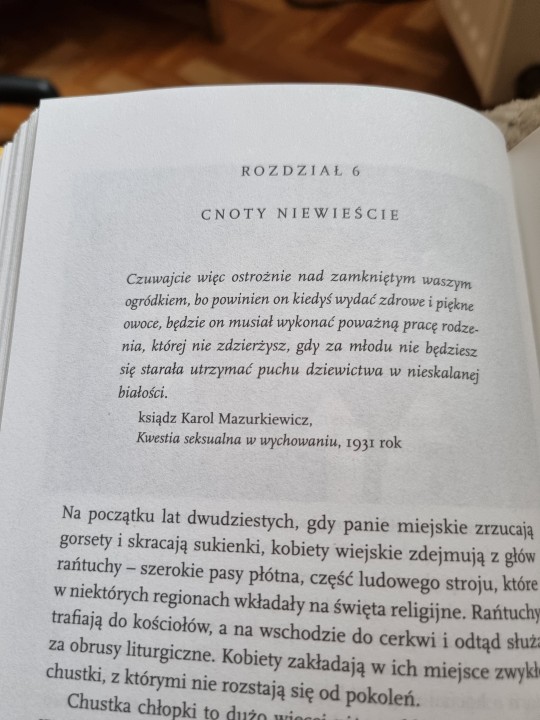
Czarnek ikoną popkultury | Pani Kuciel-Frydryszak idealnie użyła słów byłego (🤞🏻 i mam nadzieję, że nigdy nie wróci) ministra edukacji (z małych, bo nie szanujemy go) o pielęgnacji cnót niewieścich, jako tytuł rozdziału omawiające patologię i przemoc wobec kobiet w wiejskich domach w dwudziestoleciu międzywojennym.
Słowa człowieka, który miał reprezentować oświatę polską w XXI w., skonfrontowano z okrutną prawdą patriarchatu na niewyedukowanej i biednej polskiej wsi (na której po dziś dzień do pewnego stopnia ta stara mentalność się utrzymuje) 100 lat temu. Tego chciał dla nas pan C. Taki człowiek, w tych czasach, nie powinien zostać dopuszczony do wystąpień publicznych, a co dopiero, nie powinien reprezentować i rządzić segmentem edukacji.
Polecam wszystkim reportaż "Chłopki. Opowieść o naszych babkach" Pani Joanny Kuciel-Frydryszak. Dla mnie, osoby, której babka urodziła i wychowała się na wsi (może niejedna, niestety tylko o jednej wiem), z matką wychowaną w pgr [choć książka nie o tych czasach] ta książka otwiera oczy i brutalnie przedstawia rzeczywistość, z którą musiały się mierzyć kobiet z przynajmniej jednej strony mojej rodziny. Wiedziałam, że tak było. Chyba każdy ma te drastyczne historie gdzieś z tyłu głowy. Jednakże przeczytanie o tych społeczno-psychologicznych uwarunkowaniach życia sprzed ok. 100 lat pomaga mi patrzeć na historię (jednej gałęzi) mojej rodziny z nieco większym współczuciem i wyrozumieniem.
W pewnych historiach doszukuję się (i znajduję) swoją babkę, rozmyślam, czy ona też tak to przeżywała, czy może jej życie okazało się, chociaż odrobinę lepsze od najgorszych opisywanych tu historii. Niesamowita przepaść między naszymi pokoleniami. Zupełnie inna mentalność. Ten reportaż pozwala mi o wiele bardziej docenić to, co mamy i zrozumieć, skąd biorą się te zgromadzone od pokoleń traumy, z którymi dopiero teraz próbujemy się rozliczyć.
Oby już nikt nigdy nie wyszedł na mównicę, mówiąc nam o cnotach niewieścich. Nie po to nasze przodkinie cierpiały, niejednokrotnie marząc o śmierci, by jakiś uprzywilejowany mężczyzna znów mówił nam, co mamy robić ze swoim ciałem i życiem.
Przepraszam, rozpisałam się, ale dawno nie czułam takich emocji. To trudna lektura, szczególnie dla mnie, bo jestem dziekiem nadwrażliwym. Zazwyczaj nie czytam reportaży, bo wiem, że są o wiele bardziej przerażające niż horrory. W horrorach najczęściej potworem jest zła moc, duch, demon. W reportażach najgorszym potworem są zawsze inni ludzie.
#reportaż#chłopki#chłopki opowieść o naszch babkach#polski reportaż#joanna kuciel-frydryszak#feminizm#feminist#feminism#polska historia#polish history#***** ***#books#book review#książka#książkoholik#kobiety#cnoty niewieście#poland#polish#polska#polska literatura#polski cytat#historia polski#polska wieś#wieś#po polsku#book#personal#katolik#catholiscism
29 notes
·
View notes
Text
Thread about Joanna of Castile: Part : 10 “A Storm of Jealousy: Juana and Philip's Turbulent Reunion"




By May 1504, Juana was in Burgundy. Juana’s reunion with Philip and the children was joyful.
But soon afterwards she suspected, or discovered, an affair between Philip and a noblewoman in her entourage:






“They say,” writes Martire, “that, her heart full of rage, her face vomiting fames, her teeth clenched, she rained blows on one of her ladies, whom she suspected of being the lover, and ordered that they cut her blond hair, so pleasing to Philip …”


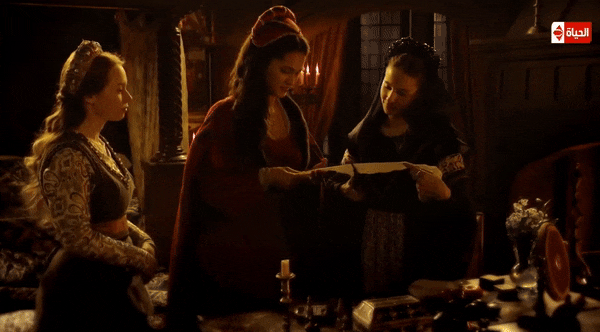
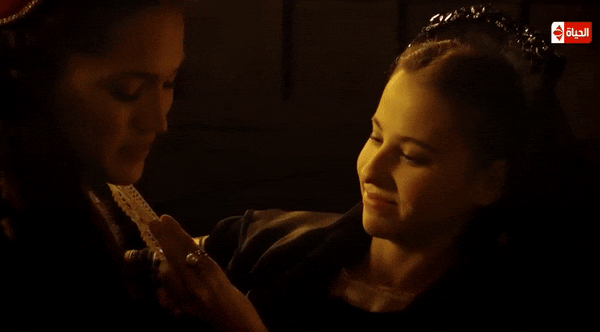


Philip’s response was equally furious. He had “thrown himself” on his wife and publicly insulted her.




Sensitive and obstinate, “Juana is heartbroken … and unwell …”.
Isabel “suffers much, astonished by the northerner’s violence.
Maximilian’s biographer, Wiesfecker, describes Juana’s response as:
"The symptom of a pathological, passionate, if not unfounded, Haßliebe, fomenting continual strife. "
Juana would have known for years about Philip's visits to the baigneries and his more casual relationships with women. However, this affair seemed to pose a direct challenge to her standing and dignity. Juana knew her faults and had tried to limit them. In 1500, after becoming princess, she had asked Isabel to send her an honest and prudent Spanish lady who:
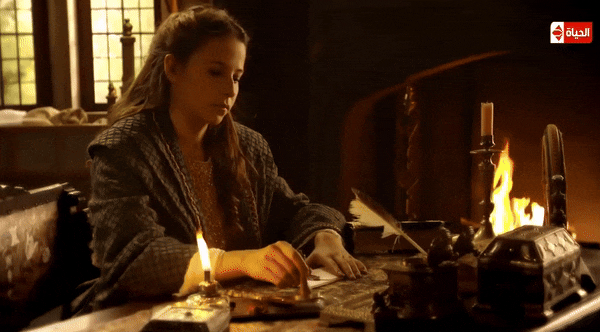



“Knows how to advise her, and where she sees something out of order (‘deshordenado’) in her conduct could say so as servant and adviser but not as an equal because, even if the advice were good, if expressed in a disrespectful way it would create more anger in she to whom it was said than it would allow for correction.”
Sources: Fleming, G. B. (2018). Juana I: Legitimacy and Conflict in Sixteenth-Century Castile (1st ed. 2018 edition). Palgrave Macmillan.
Fox, J. (2012). Sister Queens: The Noble, Tragic Lives of Katherine of Aragon and Juana, Queen of Castile. Ballantine Books.
Gómez, M. A., Juan-Navarro, S., & Zatlin, P. (2008). Juana of Castile: History and Myth of the Mad Queen. Associated University Presse.
#joanna of castile#juana i of castile#juana la loca#philip the handsome#isabel#european history#spanish monarchy#spanish princess#infanta#irene escolar#raul merida#flanders#vlaanderen#Huis Habsburg#House of Valois-Burgundy#Filips I van Castilië#Philippe le Beau
16 notes
·
View notes
Text
Anyone else find that an album sharing a title (or at least a prominent lyric) with a specific track on it makes you more likely to listen to that album / track? When I'm scrolling through my albums just reading the title will put the song into my head and then I want to listen to it.
The most powerful of these for me is Have One On Me by Joanna Newsom, whose title always immediately makes me hear her absolutely heartrending delivery of "I really want you to do this for me: will you have one on me?"
#draco speaks#I can never remember which historical figures that song is about and I know nothing about me but the story kills me anyway#some mistress of some french king I think which doesn't really narrow it down like at all and I know nothing about French court history#but still... 🎵 though the long road begins and ends with you I cannot seem to make amends with you... loooooooooouiiiiiiiiis🎵#GOD Joanna Newsom is the greatest songwriter of all time change my mind#'I drink to your excellent health and your cruelty'#...Wonder if that would fit as a Tumblr blog title?
2 notes
·
View notes
Note
What are your thoughts on Jane Boleyn, and the role she supposedly played in the fall of 3 Queens (Anne Boleyn, Anna of Cleves, Katheryn Howard)? Do you think she has been too maligned by historians for centuries, especially when it comes to the relationship with the Boleyns (it seems she got along with Anne)?
Now that I've read both works and compared them side by side, I suppose I would say my stance on Jane Boleyn falls somewhere in between that of Julia Fox and James Taffe ('Somewhere in between' is not, btw, Alison Weir); although closer to the former than the latter. Offering critique of both biographies, I would say that of JF is too apologetic (smoothing out wrinkles that exist in her arguments rather than acknowledging them) and JT is too severe.
Especially when it comes to the relationship with the Boleyns? Yes and no. Obviously she was married to George, she sent him a message of comfort while he was in the Tower, and wore only black the rest of her life, which was quite the potent statement. However, I would allow for the possibility that she potentially, inadvertently implicated him or AB (ie, testimony of hers was twisted to suit the crown's case). This is where I think there are flaws in the arguments of some of her defenders-- they cannot allow for even that possibility and so make claims that disallow it; some of which are untrue. 'Jane was only blamed as a means of absolving Henry in the whitewash of Elizabethan propagandists' is not true. Johannes Sleidan in 1545 claimed that Anne and George died by her 'false accusation'. Sleidan was a Reformer, so he would have been more sympathetic towards the plights of these two than the average person, and would have spoken to others that were as well, but the motivation to vindicate Elizabeth did not yet exist; she was at this point the very unlikely third in line to the throne.
I do appreciate that you said 'got along' with Anne, not 'besties', because...it's possible they were very close, certainly, but we must also allow for the possibility of animosity. The linchpin for the argument of closeness is the report from Chapuys that they 'conspired together' to banish Henry's mistress from court. Was this the precise truth? Considering the source I'm doubtful. Probably there was a lady Henry was serving at this time (although that we never have a name makes the story somewhat suppositious), but did they need to have 'conspired together' against her for Jane to be banished from court (which is what happened instead)? Jane might have merely made Anne aware of her, and Henry finding out that she'd been the source would have been enough for banishment. Or, as was presented plausibly in Adrienne Dillard's fictional rendition, Jane might have dropped hints to Cromwell that this mistress was a supporter of the two exiled and contumacious royal women that were Anne's adversaries, Cromwell might have passed this along to Henry, and Henry might have banished Jane for shattering the illusion that this woman had no independent ambitions or ulterior motives and merely let him hit for the sheer pleasure of his company.
If this was evidence of closeness, and it might be, then we also have to remember that the end result was Jane's banishment from court, and that there is, as JT fairly pointed out, no evidence that any of the Boleyns spoke in her defense, favor, or for her return. It would take an extremely magnanimous person to accept all that with equanimity and not feel any resentment whatsoever. So, if there was intimacy, there might have also been rift.
That leaves the question: enough 'rift' for her to seek vengeance? I doubt that much for all the reasons Fox outlines in her biography, but at the same time I wish there was not this relentless push to only defend women that we assert 'deserve' defense, on the premise they were entirely selfless, accepted every insult with grace, never kept any grudges, never had personal ambitions (the actions she took during the queenships of those you mentioned would suggest otherwise), mixed emotions, or conflicting loyalties; that we could acknowledge that acknowledging the agency of historic women also means acknowledging they were capable of making mistakes.
#anon#it feels like an 'overcorrection' to some degree. if that makes sense?#altho that's generally what ppl say about AB too and i generally think they're wrong lol#'waaah AB apologism waaaaahhh joanna denny wahhhhhhhhhhhh h/ayley nolan'#bitch. no one serious is taking those seriously. if joanna denny was the definitive AB bio that would be one thing#the definitive is eric ives who oh no said in his personal opinion that his favorite was more attractive in personality and appearance#than the other...oh my god that is the worst thing anyone has every said in the HISTORY OF TIME#are y'all this sensitive in real life bcus fr.#how do you bitches SURVIVE..................#anyway what i was initially going to say after coming back to this:#*ever#like the way this figure is used to have it both ways really bothers...me?#i think there's some ambiguity here but like#i read someone claim that JS must have been 'so sweet' bcus otherwise JB would not have been her lady in waiting....#which is like. be fr? if JB loved george and anne she would have hated her lol#or at the very least have been uneasy in her presence (there's a great scene with this in adrienne's sequel btw)#but like...idk man. ppl just don't seem to get how humans worked? or have any sort of emotional; media; literal; literacy?#this was my thing with BSR too 'how dare THEY say henry NEVER loved coa how dare THEY say jane was to blame for anne's miscarriage'#like right...were 'they' saying that or was anne? or was that what anne believed? was the show perhaps from her (gasp) POV and so#these things were portrayed? i mean ffs.... by our literal primary sources those were the things she said.#someone's emotions and beliefs /= infallible unassailable entire truths#nor are they necessarily 'fair' and the same with our judgements. welcome to being a human being#so yeah like re: JB....#*that she felt like that? was it entirely fair to blame and resent the seymours?#is that necessarily fair? no. how much she did or didn't was probably dependent on how accurate chapuys report was about JS#the extent to which she had disparaged anne#as for the why as JF theorized ; the need of income and the possibility that since cromwell had helped her with income#this was the favor he wanted in return (so her as a spy in the household)#and re: conflicting loyalties ; i mean ...goddamn; people are complex#i think it's entirely possible that JB loved anne but also had this innate sympathy for coa and mary too.
12 notes
·
View notes
Text
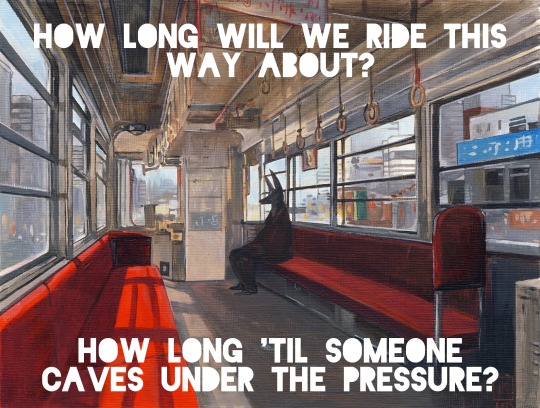
Idylls of the King by The Mountain Goats // Anubis Traveling by Joanna Karpowicz
#lyrics edit#art#lyrics#collage art#idylls of the king#the mountain goats#mountain goats#the mountain goats lyrics#tmg#tmg art history#tmg lyrics#Joanna Karpowicz
43 notes
·
View notes
Text





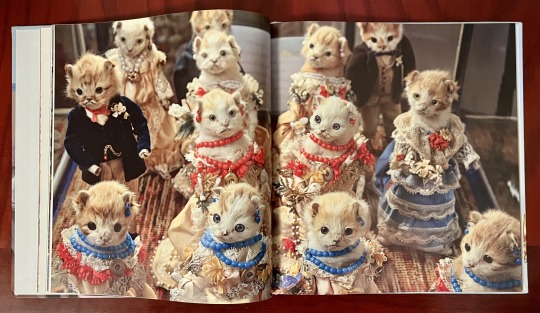
Book 473
Walter Potter’s Curious World of Taxidermy
Dr. Pat Morris with Joanna Ebenstein
Blue Rider Press / Penguin Random House 2014
Born in Bramber, Sussex, England in 1835, Walter Potter (d. 1918) grew up in the family inn/pub, The White Lion. He left school at the age of fourteen and began trying to come up with ways that his naturalist/taxidermy hobby could help encourage business at the pub. At the age of 19, inspired by his younger sister’s collection of nursery rhymes, Potter started creating his first major tableu, The Death and Burial of Cock Robin—a work that would take him seven years to complete. Housed within a wooden house-shaped case nearly two yards wide, Cock Robin features 98 birds, a small handmade bull, butterflies and other insects, and even a snake—artfully arranged in a solemn mourning scene down a path leading into a church. Some of the mourners are even crying glass tears. The work delighted the Victorian sensibility.
Eventually, Potter opened a museum to house his work and over the course of his life would create, among numerous smaller pieces, at least a dozen large tableaux with titles like: The Kittens’ Wedding (c. 1890), Rabbits’ Village School (c. 1888), The Upper Ten (c. 1880), depicting a squirrel card club, and The Lower Five (c. late 1800s), a scruffy rats’ den being raided by local police (also portrayed by rats).
#bookshelf#library#personal collection#personal library#books#bibliophile#book lover#illustrated book#booklr#art#walter potters curious world of taxidermy#pat morris#joanna ebenstein#blue rider press#nature#natural history
5 notes
·
View notes
Text


2 notes
·
View notes
Photo




FRENZY (JOANNA CARGILL) has been added to the MCOC Wishlist
Literarily a long-strong mutant who was a villain with the Acolytes and Marauders and is now in the #XMenVote, Frenzy is overdue for upvotes from @MarvelChampions Summoners. #BHM #BlackHistoryMonth #MCOC
#Frenzy#Cargill#Joanna Cargill#pilot#physical resist#invulnerable#exhaustion#bleed immune#incinerate immune#coldsnap immune#Acolytes#Marauders#Alliance of Evil#Jean Grey School#S.W.O.R.D.#additions#recent rank#black#black female#black history month#frostbite immune#Wishlist Cleanup
2 notes
·
View notes